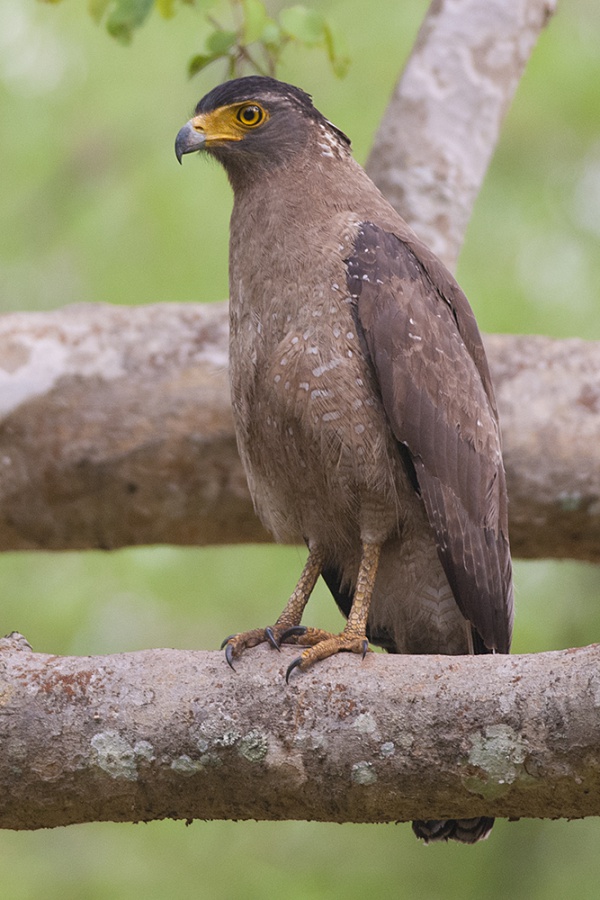Facts About Crested serpent eagle
The crested serpent eagle is a striking medium-sized bird of prey that inhabits the lush forests of tropical Asia. With several subspecies, some experts even consider them separate species. These eagles are easily recognizable by their large heads, long feathers forming a crest, yellow bare faces, and powerful feet. Often seen soaring over forest canopies, their broad wings and tails are marked with distinctive white and black bars. True to their name, they have a penchant for snakes, and their loud calls are a common sound in their habitats. They belong to the subfamily Circaetinae, which includes other snake-eagles such as Circaetus.
Description
The crested serpent eagle is a medium-large bird characterized by dark brown plumage, rounded wings, and a short tail. Its nuchal crest, along with its yellow facial skin and feet, makes it stand out. The underside is spotted, and the wings and tail feature black and white bars. Juveniles display more white on their heads compared to adults.
Distribution, Taxonomy, and Status
This species boasts 21 identified subspecies scattered across tropical Asia. Some subspecies, especially those on smaller islands, are considered separate species. Although the crested serpent eagle is generally widespread and common, some island populations are minuscule, with the Bawean serpent eagle being critically endangered. Subspecies vary in size and coloration.
Behavior and Ecology
Crested serpent eagles primarily hunt reptiles such as snakes and lizards, but their diet also includes birds, amphibians, mammals, and fish. They thrive in areas with dense vegetation on low hills and plains. Their distinct call sounds like "Kluee-wip-wip" and they often perch quietly or soar using thermals in the morning. Breeding occurs in late winter, with nests built high in trees using green leaves. They typically lay one egg, and both parents fiercely defend the nest.
Other Information
These eagles can be affected by endoparasitic nematodes and avian pox virus infections, and are also hosts to ectoparasitic bird lice. Interestingly, other bird species sometimes nest near crested serpent eagles for protection from predators.
